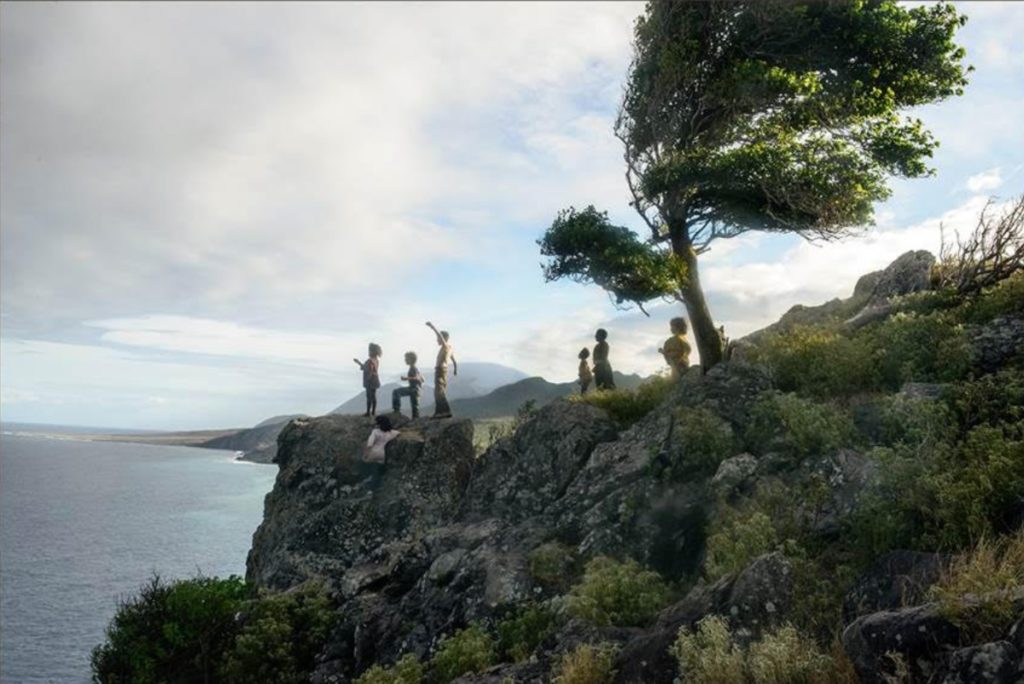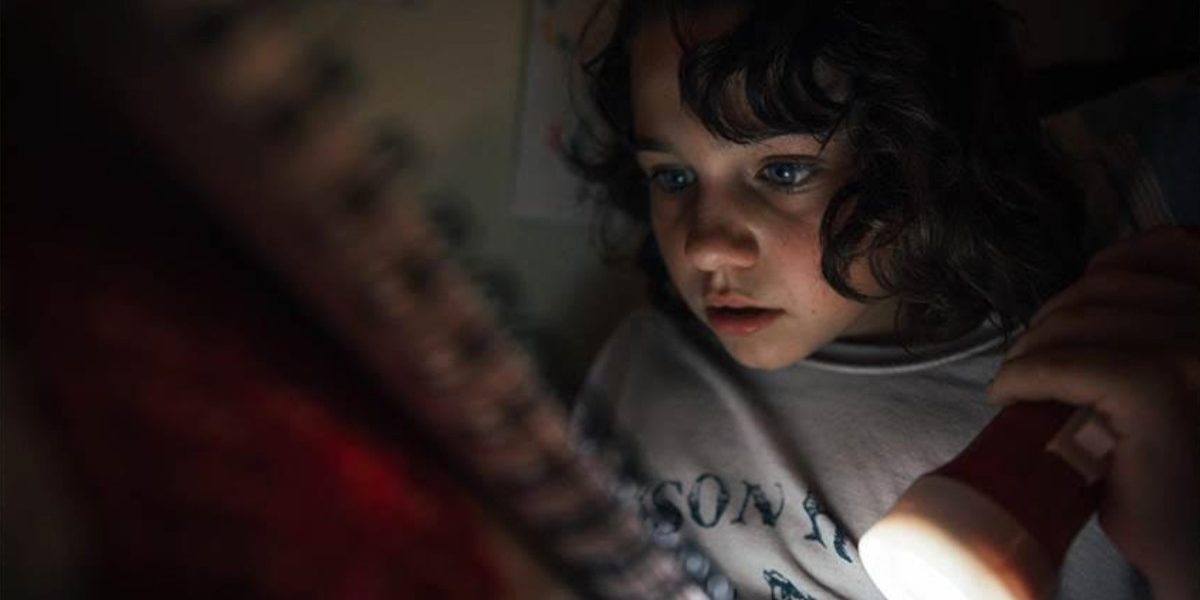Rugged and wild adaptation brings new magic to the Peter Pan story.
DIRECTED BY BENH ZEITLIN/2020

It’s entirely understandable to approach the new film Wendy with the kind of exasperation. Generally speaking, the world needs yet another movie adaptation of J.M. Barrie’s Peter Pan like viewers need their right hands lopped off. But don’t be quick to dismiss this new version, a fully rugged and ragtag take on the material by the director of 2012‘s Beasts of the Southern Wild.
As of Wendy, that director, Benh Zeitlin, has only two feature-length films under his belt. Yet, at the simplest of analytical glances, it’s fair to pronounce his aesthetic as a primary auteur trademark. Which is to say, both films thrive in near-real versions of a simpler and impoverished American South. His is a world of rusty metal, rotten wood, and water. Lots and lots of water. He shows us just enough harsh reality to plant the seeds of desire for escape; he renders children authentically enough that we want to see them harness whatever magical opportunities that the films dangle before them.
Beasts of the Southern Wild, which chronicles life amid a kind of post-Hurricane Katrina landscape through the eyes of a very young African American girl named Hushpuppy, certainly had its share of ingrained magic. However… though it was a crowd-pleaser at the time, there’s been no second life for Beasts of the Southern Wild. For reasons yet unexplored, it more or less evaporated from the cultural consciousness shortly after that year‘s Academy Awards. Which perhaps somewhat explains Zeitlin’s nearly decade-long delay in returning to the big screen.
Thankfully, Wendy stands as an absolutely worthwhile return. Though clearly a deeply personal project through and through, Zeitlin this time wisely harnesses the connective power of long-familiar iconography. Peter Pan purists, if there are any, may not be happy with his vision. For the most part, though, the core beats, tropes, and elements all manifest.

Not at all unlike Beasts of the Southern Wild, Zeitlin glories in depictions of young children running free in nature; loud, raucous, and filthy. Though the real world that Wendy begins in has many trappings of contemporary small-town life, this pretty clearly seems to be an alternate version insomuch as these kids are enjoying childhoods free of YouTube and video games. Even before young Wendy (Devin France) and her two brothers (Gage and Gavin Naquin) are whisked away to the unnamed Neverland by a particularly impish Peter Pan (Yashua Mack), they are already living lives of outdoor play and kid-like meandering.
But mostly, they’re forced to hang around their mom’s Podunk café. The loneliness and sad solitude of its aging patrons is not lost on the children. Early on, one boy is overcome with birthday panic, right in the middle of a celebratory meal of bacon and maple syrup. He freaks out, runs outside, proclaims that he never wants to get old, and hops a passing train never to be seen again. That is, until Wendy and her brothers eventually hop the same train a few years later, discovering the first boy amid Peter’s “lost boys“, and taken aback that he hasn’t aged at all.
The shift in economic status of the Darling family is perhaps Zeitlin’s most impactful alteration to the old Barrie narrative. Darlings of the original, altogether wealthy and British, have little to actually long to escape from. The argument, one supposes, could be made that by excluding any outside struggle, Barrie was able to more purely examine the notion of forever childhood. But, in our current age of economic disparity and accelerated childhoods, Zeitlin’s alterations play, if not as absolute correctives, then as entirely viable reimaginings.
Not at all unlike Beasts of the Southern Wild, Zeitlin glories in depictions of young children running free in nature; loud, raucous, and filthy.
The film moves and grooves in its own particular idiom, almost in spite of the children themselves. Though ultimately a terrifically and relatively modest piece of work, it’s two minor flaws that can be pointed to are these: though the film is named after Wendy, and the emotions of her and her bothers’ childhoods are palpable and key, they nevertheless remain cyphers for said themes. Who are they really? They’re just, you know, kids. Make no mistake, this is Benh Zeitlin’s movie, not theirs. The second complaint would be the way that the director (who also shares credit for scoring the film) veers dangerously into areas of preciousness, particularly with his use of music and child speechifying. Though Wendy is not the kind of empowerment piece that Beasts was, Zeitlin has clearly seized upon the popularity of that film’s beloved (at the time) proclamation by its pint size star, “the scientists of the future, they’re gonna find it all. They gonna know, once there was a Hushpuppy, and she live with her daddy in the Bathtub.” There’s more than one such rousing little statement of similar tenor in Wendy, all stumbling in terms of effectiveness or need to be there.
That said, Wendy is not to be skipped. As a family filmgoing experience, it would fall in line with the kind of dark, weird fare that was geared towards children in the early to mid-1980s. Time Bandits, The Neverending Story, Labyrinth… The kind they don’t make anymore. Case in point, whereas back in the day a film like Wendy would’ve been a mainstream draw for kids and families, today, it gets slapped with a PG-13 and its distributor, Sony Pictures Classics, seems to be marketing it to arthouse audiences.
Wendy is a solidly creative vision demonstrating a filmmaker truly coming into his own as an artist. It’s a pretty great if not perfect effort, not at all deserving to be panned. So, while it may vary in preciousness at times, that’s not what it truly is at all. Wendy, is in fact, Darling.


